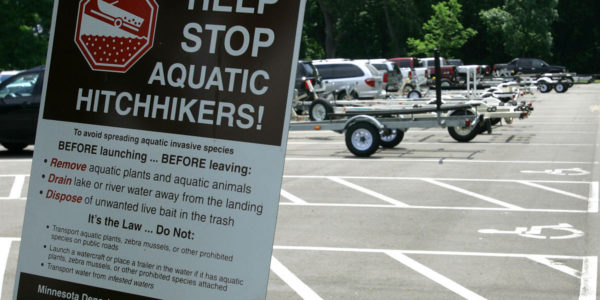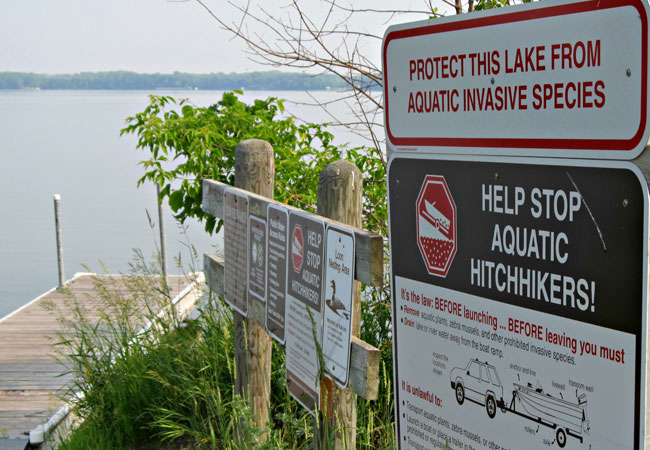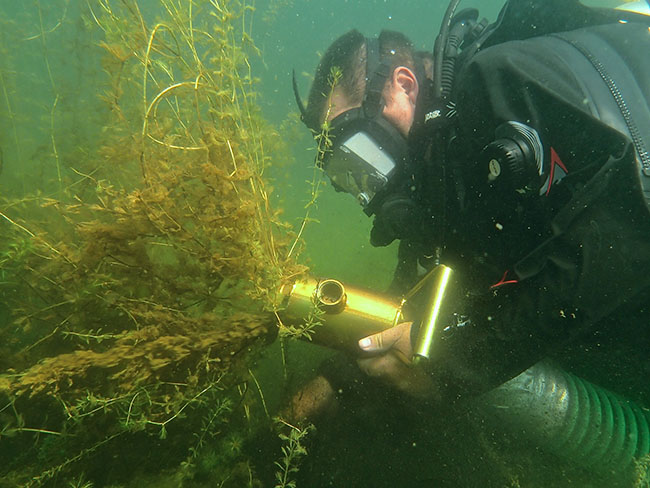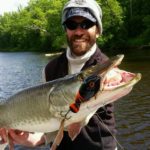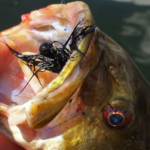By Adam M. Glickman
For over 20 years now, those who utilize WI and MN waters have been exposed to the effects of aquatic invasive species, efforts to control them, and campaigns to make the public more aware of them. I would define the modern and commonly used term “invasive species” as certain species that would have not likely ended up in a specific environment if not for the influence of human beings.
For instance, zebra mussels (ZM) and eurasian water milfoil (EWM) are species that would have almost certainly not made it to North America if humans had not brought them here. Most types of living organisms migrate in one way or another, or at least attempt to do so. Some species migrate on their own, others are aided (often unknowingly) by other species. Regardless, when a species (previously nonexistent in a certain environment) is introduced into said environment, it alters the ecosystem of that environment. The more it thrives and proliferates, the greater it alters the local ecosystem. That is the way ecosystems work. Since nearly all species migrate, the only thing that defines an invasive species, is that humans have aided them, and since human beings are merely creatures of this earth and all organisms strive to migrate, then either invasive species are merely just species or all species are invasive species.
But why then give them this label and spend vast amounts of money on campaigns designed to raise awareness and on exhausting yet largely ineffective efforts to eradicate certain invasives from specific environments. One reason that is given is that they disrupt local ecosystems, but I think this is only of concern when an undesirable invasive specie threatens a specie more desirable to humans. The other reason is when invasive species become a nuisance and/or cause economic loss.
Invasive species only get bad press when they are seen as having little value or are a nuisance. I doubt many people really care about the balance of our ecosystems. For example, ZM and EWM are no more invasive species than are walleyes, trout, and salmon in many of our waters; and I would love to hear solid evidence that suggests that the introduction (intentional or unintentional) of any one of these species has any more or less impact than any other on the affected ecosystem. In reality, the only difference is that people love catching and eating walleye, trout, and salmon; and they dislike thick milfoil in the shallows off of their expensive properties and they also dislike zebra muscles plastered to their expensive boats.
I understand that there are economic considerations in play and that certain undesirable species are in reality very threatening to more desirable species. I am only urging that our approach towards invasive species be drastically changed. First, our evaluation process needs to be more logical and pragmatic. Questions such as “How threatening is this species really?”, “Is there a practical and effective solution?”, and “Does the end justify the means?” need to be answered truthfully and effectively. Also, some of these issues need to be evaluated as a public or private matter.
For example, if it turns out that ZM and EWM aren’t really all that environmentally harmful, why is public money used to eradicate them when they are likely merely an inconvenience to such a small percentage of the population? I think it is very possible that wealthy waterfront property owners are often either the ones making decisions in our states and/or have influence on the decision makers. Why not spend public money to fix one’s own personal problems if that person has the power to do so? It is certainly not morally justifiable, but it is the nature of the world in which we live.
In reality, what have ZM and EWM really done to have a negative impact on the health of our water? I can think of no examples. I have only seen gamefish of all species thrive in EWM, and ZM filter out water making the environment healthier for all gamefish. They way these two species are spoken of, one would expect to find waters they live in looking like a toxic waste dump void of any life; but just the opposite is true because in reality other aquatic life flourishes in their presence. Anybody who has taken the time to personally investigate has seen the same. Some species certainly suffer, but what are we to do to prevent certain plants and mollusks from being out competed? Migration of species and competition among species is part of the natural order of our world. I can certainly not find any reasonable justification for the use in our waters of chemicals that are delivered in tanker trucks with hazmat placards. The money spent on the dumping of these chemicals could also be used on something more worthwhile.
Once we begin to ignore the propaganda (more than likely fueled by ulterior motives) we may finally be able to examine actual evidence regarding undesirable invasive species. From there, we need to evaluate the actual threat they pose and decide if there is an effective course of action, and if there is, is its price worth the outcome. For example, EWM and ZM have continued to thrive in the waters into which they have spread and continue to spread to new waters in spite of millions of dollars being spent in MN and WI alone on boat landing inspections, propaganda, and the dumping of toxic chemicals. Even if it was proven that these two species were detrimental to aquatic environments, it doesn’t seem like anything can really be done about it. If it could, it would have been done and these species would not still be thriving years and decades later. So why then spend the money and dump chemicals that are supposedly “safe”? In reality, I think people like to complain (even when there is really no need for complaining) and other people don’t want to hear it anymore, so they dump toxic chemicals to make it look like they are doing something. Unfortunately, this seems to appease the masses.
We are headed down a road of wasted money and polluted water when it comes to our approach towards invasive species. I am not saying that we do nothing, but we need to examine each specie individually, intelligently, and honestly. From there we need to do what is best for our aquatic environments, which will also be what is best for the greatest number of people.
For more content, including video from Honesty Musky Television, Honest Musky Guide Service, Seminar Topics and Availability, and more articles; visit: www.honestmusky.com
Adam Glickman is an independent agent who shops across 9 different A rated insurance companies to best meet your MN and WI home, renters, auto, life, boat, and commercial insurance needs. For more information, contact Glickman at 612-750-0546 or at adam@lcisagency.com


